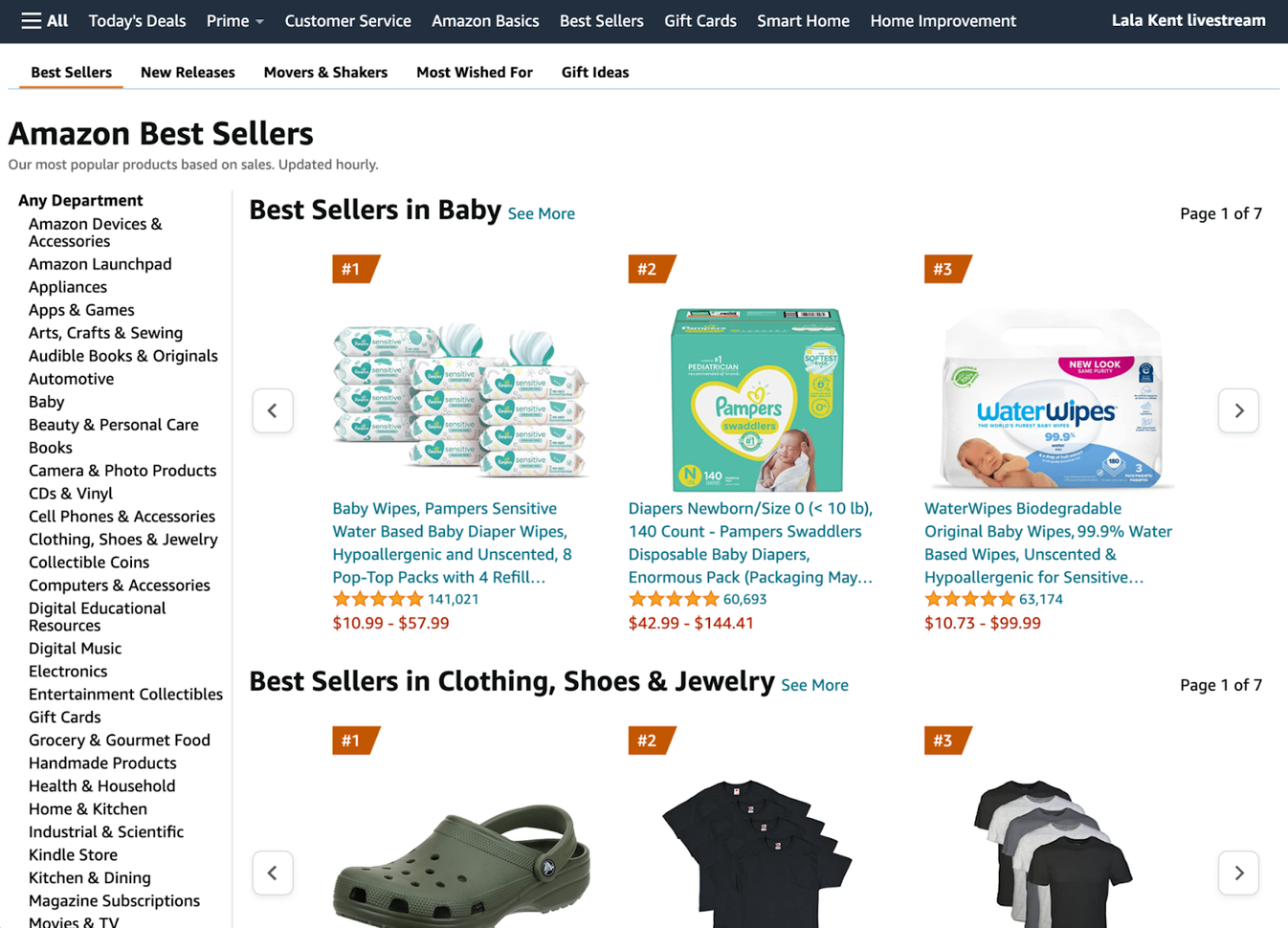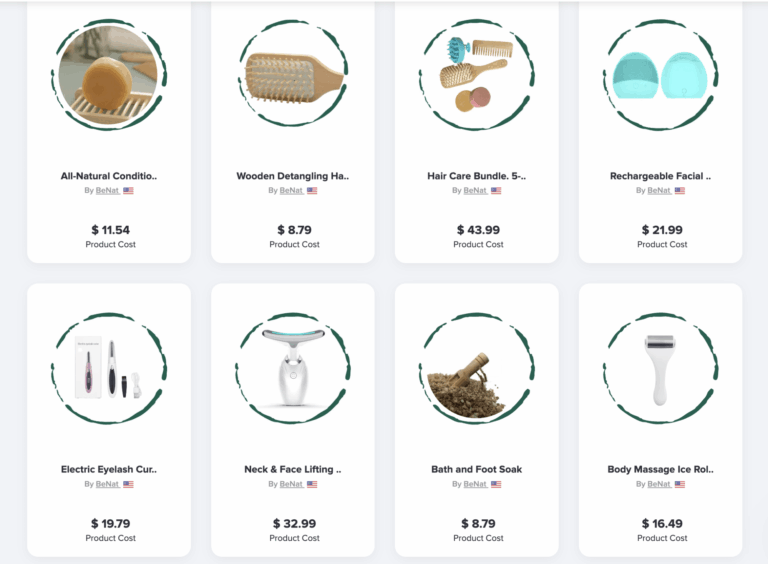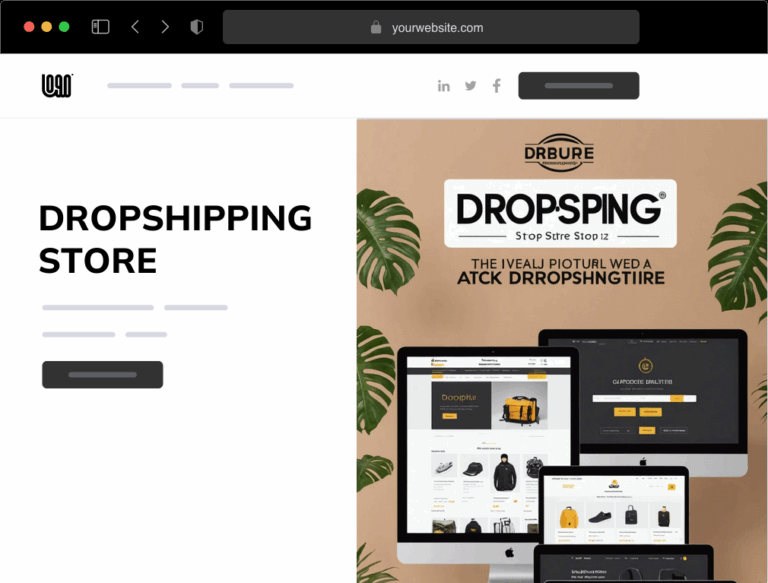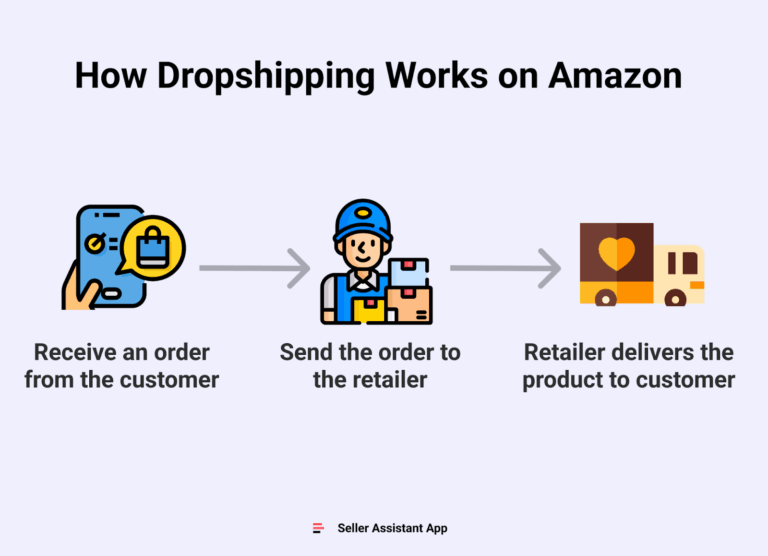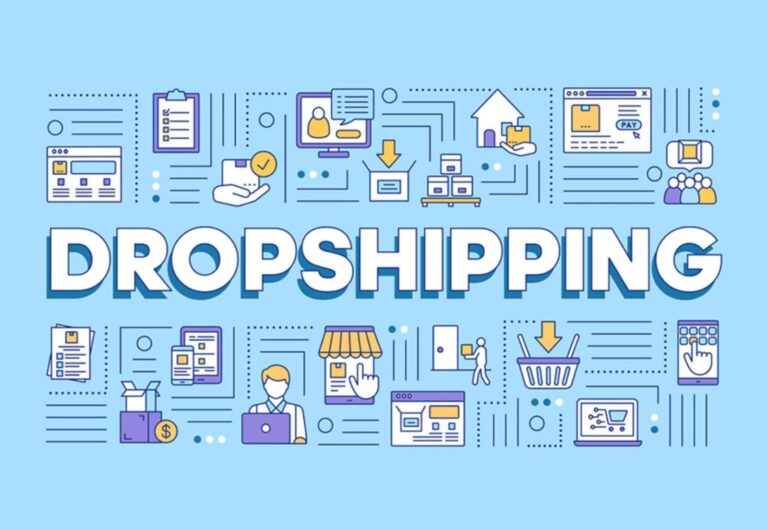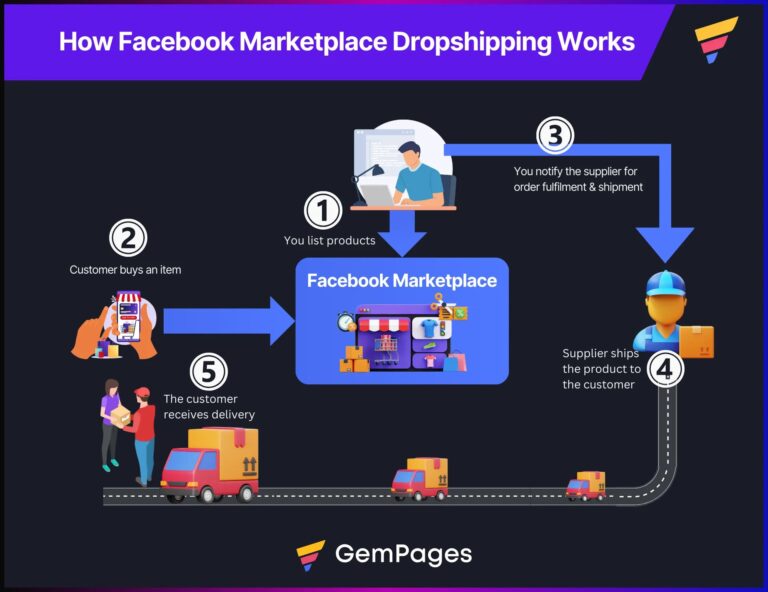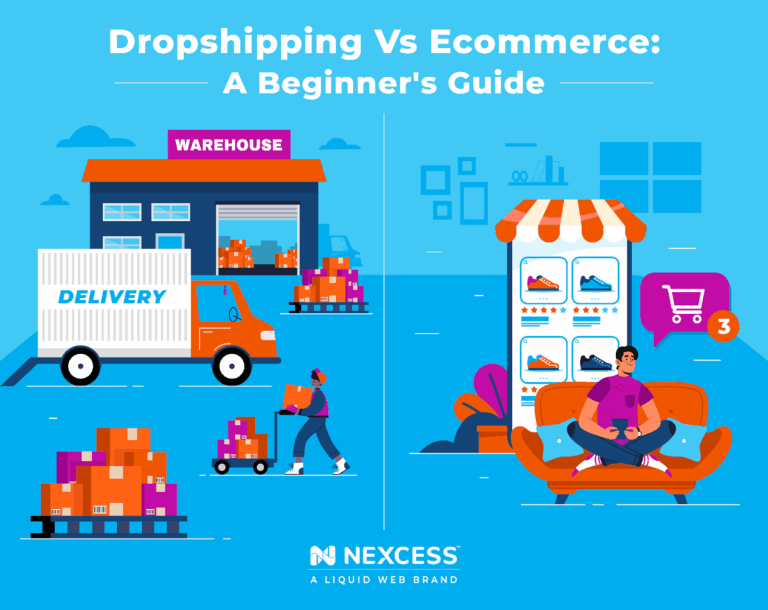How to Start Dropshipping in 2025 (A Beginner’s Guide)
Your Complete Guide to most profitable items for dropshipping
Welcome to Your Entrepreneurial Journey
Congratulations on taking the first step towards building your own business! Your ambition to become a successful entrepreneur is commendable, and in today’s digital landscape, the possibilities are vast. Dropshipping has emerged as a popular business model for aspiring business owners like you, providing a way to enter the e-commerce space with minimal investment and risk.
So, what exactly is dropshipping? At its core, dropshipping is a retail fulfillment method where you, as the store owner, don’t hold any inventory. Instead, when a customer makes a purchase, you simply purchase the item from a third party—usually a wholesaler or manufacturer—who ships it directly to the customer. This means you can focus on marketing and selling without worrying about warehousing or managing stock, which is a significant advantage for those just starting out.
One of the most appealing aspects of dropshipping is its low startup cost. You don’t need to invest thousands of dollars in inventory upfront, which can make starting a business accessible to nearly anyone. Additionally, dropshipping offers flexibility; you can run your business from anywhere with an internet connection, allowing you to work at your own pace and create a lifestyle that suits you.
In this guide, we’ll provide you with a complete roadmap to navigate the world of dropshipping successfully. We’ll explore how to identify and select the most profitable items to sell, based on current market trends and consumer demand. You’ll learn effective strategies for sourcing products, setting up your online store, and marketing your offerings to attract customers.
By the end of this guide, you’ll be equipped with the knowledge and tools needed to make your first sale and start building a sustainable online business. Remember, every successful entrepreneur started where you are now—by taking that first step.
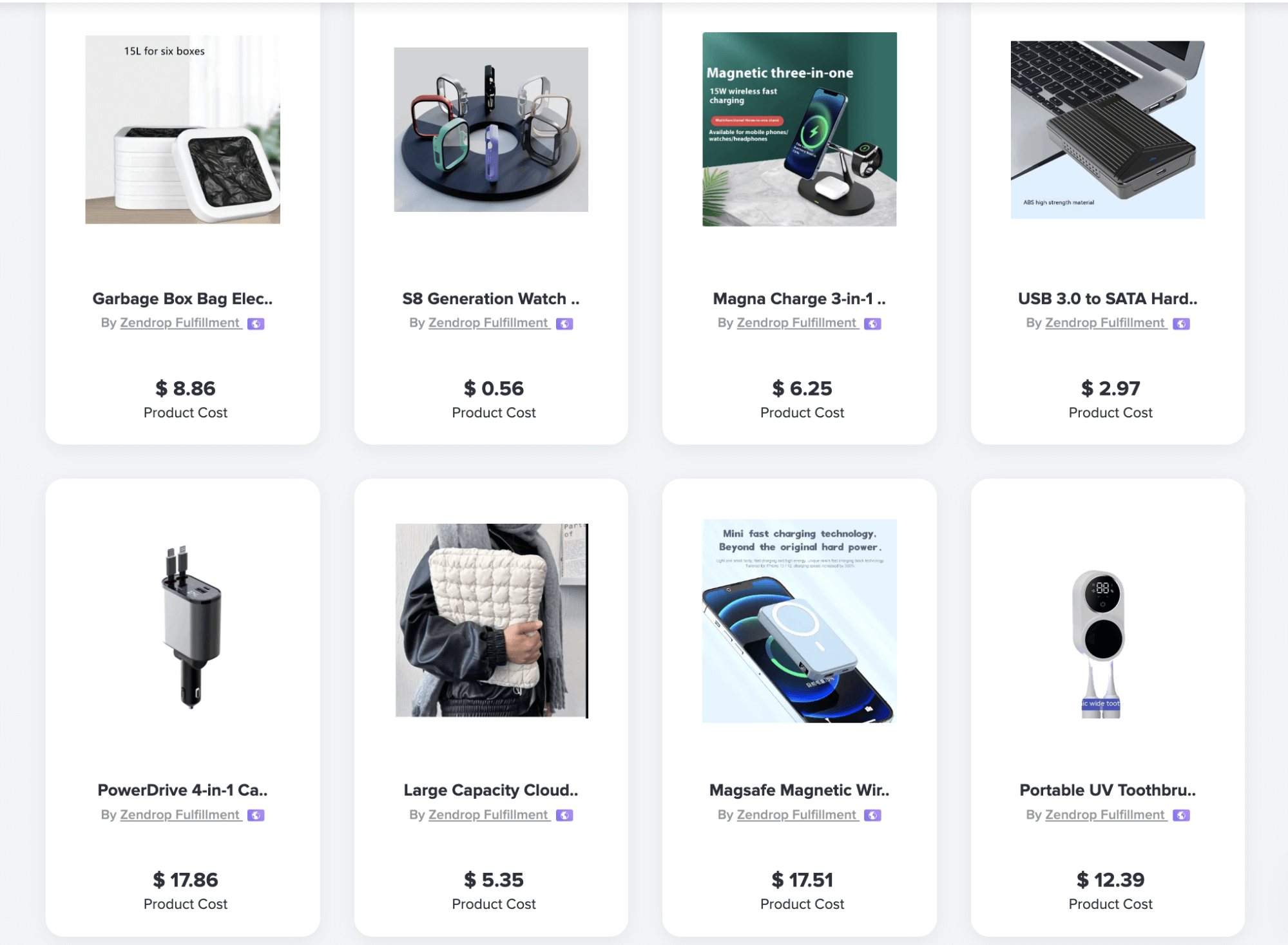
So, let’s turn your entrepreneurial dream into a reality! With the right guidance and determination, you can build a thriving dropshipping business that not only meets your financial goals but also fulfills your passion for entrepreneurship.
What You’ll Learn In This Guide
- Your Complete Guide to most profitable items for dropshipping
- How Does Dropshipping Actually Work? A Step-by-Step Breakdown
- The Pros and Cons of Dropshipping: Is It Right for You?
- Step 1: Finding a Profitable Niche and Winning Products
- Step 2: Choosing the Right Dropshipping Suppliers
- Step 3: Building Your Online Store
- Step 4: Marketing Your Dropshipping Business to Get Sales
- Common Mistakes to Avoid as a Beginner
- Frequently Asked Questions (FAQs) about most profitable items for dropshipping
- Conclusion: Your Next Steps to Launching Your Business
- Important Disclaimer
How Does Dropshipping Actually Work? A Step-by-Step Breakdown
Understanding the Dropshipping Model: A Step-by-Step Guide
If you’re looking to start an online business with minimal investment, dropshipping is a fantastic model to consider. It allows you to sell products without having to hold inventory, making it accessible for beginners and aspiring entrepreneurs. Let’s break down how dropshipping works in a straightforward, step-by-step manner.
- Customer Places an Order on Your Online Store
- The process begins when a customer visits your online store and selects a product they wish to purchase. They add the item to their cart and complete the checkout process by entering their payment and shipping information.
-
At this stage, you are acting as the digital storefront. Your website showcases the products, and the customer interacts with it to make their purchase.
-
You Receive the Payment
- Once the customer completes their order, you receive the payment, which typically includes the retail price of the product plus any applicable taxes and shipping fees.
-
This is your opportunity to earn profit. For example, if a product costs you $20 from the supplier and you sell it for $40, you pocket the difference of $20.
-
You Forward the Order to Your Supplier
- After receiving the payment, the next step is to place the order with your dropshipping supplier. You send them the order details, including the product information and the customer’s shipping address.
-
This step is crucial as it ensures that the supplier knows exactly what to send and where to send it. You act as the middleman, facilitating the transaction without ever having to touch the product yourself.
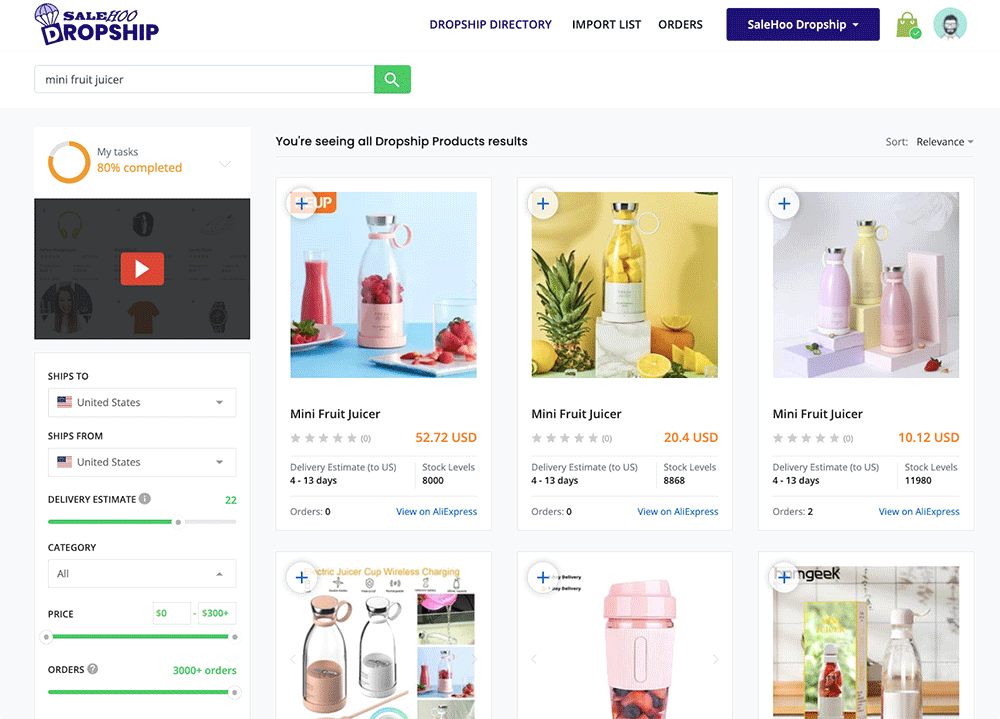
-
The Supplier Ships the Product Directly to the Customer
- The supplier then processes the order and ships the product directly to your customer. This is where the magic of dropshipping happens—you don’t have to manage inventory or handle shipping logistics.
- The customer receives the product as if it came directly from your store, maintaining your brand’s image. The tracking information is often provided to you, which you can share with the customer to keep them informed.
The Flow of Money and Goods
To visualize this process, think of it as a relay race. You’re the runner who passes the baton (the order) to the supplier, who then completes the race by delivering the product to the finish line (the customer). The flow of money and goods is seamless, with you earning the profit margin while the supplier manages the logistics.
Benefits of Dropshipping
- Low Startup Costs: Since you don’t need to buy inventory upfront, your initial costs are significantly lower than traditional retail models.
- Flexibility: You can run your business from anywhere with an internet connection, making it ideal for aspiring entrepreneurs.
- Wide Product Range: You can offer a diverse range of products without being limited by inventory constraints, allowing you to adapt quickly to market trends.
Final Thoughts
Starting a dropshipping business is not just about the steps; it’s about understanding the model and the market. Choose your niche wisely, research your suppliers thoroughly, and focus on marketing your store effectively. With determination and the right strategies, you can build a successful dropshipping business that generates profit and provides value to customers. Embrace the journey, and remember, every successful entrepreneur started with a single step!
The Pros and Cons of Dropshipping: Is It Right for You?
Advantages and Challenges of Dropshipping
| Advantages of Dropshipping (Pros) | Challenges of Dropshipping (Cons) |
|---|---|
| Low Financial Risk | Low Profit Margins |
| No need to invest heavily in inventory. | Product costs can be high, reducing profits. |
| Flexible Location | High Competition |
| Operate from anywhere with internet access. | Many sellers in the same niche can drive prices down. |
| Wide Product Selection | Supplier Reliance |
| Access to a vast range of products without stocking them. | Dependence on suppliers for stock and shipping. |
| Scalability | Inventory Issues |
| Easily scale your business without logistical concerns. | Can face stock shortages or shipping delays. |
| No Physical Store Required | Customer Service Challenges |
| Focus solely on marketing and sales. | Issues with shipping and quality can reflect on your brand. |
| Easy to Start | Limited Branding Opportunities |
| Set up an online store with minimal technical skills. | Less control over product presentation and quality. |
Understanding the Pros of Dropshipping
Low Financial Risk
One of the most significant advantages of dropshipping is the minimal financial risk involved. Unlike traditional retail models where you must purchase inventory upfront, dropshipping allows you to sell products without holding any stock. This means you can test different products and niches without the fear of losing money on unsold inventory. For aspiring entrepreneurs or those with limited capital, this feature makes dropshipping an attractive option to enter the e-commerce landscape.
Flexible Location
With dropshipping, your business can be operated from virtually anywhere that has an internet connection. This flexibility allows you to work from home, travel, or even manage your store while you’re on vacation. For individuals seeking a work-life balance or the freedom to work remotely, dropshipping can provide that lifestyle.
Wide Product Selection
Dropshipping enables you to offer a diverse range of products without the limitations of physical inventory. You can easily access thousands of products from various suppliers, allowing you to cater to different customer interests and trends. This extensive selection means you can pivot your offerings quickly in response to market demand, making your business more adaptable.
Exploring the Cons of Dropshipping
Low Profit Margins
While dropshipping offers many advantages, it also presents the challenge of low profit margins. Because many retailers sell the same products, price competition can be fierce. It’s not uncommon to see profit margins as low as 10-30%, particularly in saturated markets. Aspiring entrepreneurs must be aware of this reality and strategize on how to differentiate their offerings to maintain profitability.
High Competition
The accessibility of dropshipping has led to an influx of new sellers, resulting in high competition across many niches. Standing out in a crowded market can be a daunting task, especially for beginners. It’s essential to carve out a unique selling proposition (USP) that resonates with your target audience to attract customers amidst the noise.
Supplier Reliance
Another significant challenge of dropshipping is reliance on suppliers. You depend on them for product quality, availability, and shipping. If a supplier runs out of stock or fails to deliver on time, it reflects poorly on your business and can lead to customer dissatisfaction. Building strong relationships with reliable suppliers is crucial to mitigating this risk.
Conclusion
Dropshipping can be a viable business model for aspiring entrepreneurs and beginners due to its low financial risk, flexibility, and wide product selection. However, it’s essential to be aware of the challenges, such as low profit margins and high competition. Understanding these pros and cons will help you make informed decisions as you embark on your e-commerce journey. By leveraging the advantages while strategically addressing the challenges, you can carve out a successful niche in the dropshipping landscape. Remember, preparation, research, and a clear strategy are key to thriving in this dynamic market.
Step 1: Finding a Profitable Niche and Winning Products
What Makes a Good Niche?
Choosing the right niche is one of the most crucial steps in building a successful dropshipping business. A good niche should meet several key criteria:
-
Passion and Interest: Ideally, you should select a niche that you are passionate about. This enthusiasm will help you stay motivated through the ups and downs of running a business.
-
Market Demand: A viable niche should have a steady demand. Research trends and consumer behavior to ensure that there is a market for the products you plan to sell. Utilize tools like Google Trends to analyze search interest over time.
-
Competition Level: Assess the competition within your chosen niche. While some competition is healthy, too much can make it difficult to establish your brand. Look for niches that are not overly saturated but still have a decent customer base.
-
Profit Margins: Consider the potential profit margins of the products you want to sell. Aim for products that can be sourced at a low cost but sold at a higher price point, allowing for a sustainable business model.
-
Target Audience: Identify who your potential customers are. Understanding your audience will help you tailor your marketing efforts and product offerings to meet their needs.
How to Brainstorm Niche Ideas
Once you understand what makes a good niche, it’s time to brainstorm ideas. Here are some effective methods:
-
Personal Interests and Hobbies: Start with what you know. List down your hobbies, interests, and passions. This can serve as a foundation for niche ideas that will keep you engaged.
-
Marketplaces and Supplier Platforms: Browse popular online marketplaces such as Amazon, eBay, or Etsy. Look for trending products and categories that pique your interest. Supplier platforms like AliExpress and Oberlo also provide insights into popular items.
-
Social Media and Online Communities: Explore social media platforms like Instagram, Pinterest, and TikTok. See what products are trending among influencers or in niche communities. Participate in forums and groups to understand what people are discussing and seeking.
-
Keyword Research: Utilize keyword research tools like Ubersuggest or SEMrush to identify search terms related to potential niches. This data can reveal what consumers are actively searching for.
-
Current Trends and Events: Keep an eye on current trends, seasonal events, or societal shifts. For instance, eco-friendly products have gained significant traction, especially among environmentally conscious consumers.
Validating Your Niche
After brainstorming potential niches, it’s essential to validate your ideas before diving in. Here’s how:
-
Conduct Surveys: Create surveys using platforms like Google Forms or SurveyMonkey to gather feedback from your target audience. Ask them about their preferences, pain points, and interests related to your niche.
-
Test the Market: Consider running a small test campaign using platforms like Facebook Ads or Instagram Ads. This can help you gauge interest in your products without a significant upfront investment.
-
Analyze Competitors: Look at existing businesses in your niche. Analyze their product offerings, pricing strategies, and marketing tactics. Identify gaps in their offerings that you could capitalize on.
-
Check Product Availability: Ensure that you can source products in your niche at a reasonable price. Research suppliers and ensure they can meet your quality and shipping expectations.
-
Evaluate Profitability: Calculate potential profit margins by comparing the cost of goods sold with the prices you plan to charge. Aim for a minimum profit margin of 30% to ensure sustainability.
Methods for Finding Winning Products
Finding winning products is pivotal in dropshipping success. Here are several methods to identify products that are likely to perform well:
-
Supplier Marketplaces: Platforms like AliExpress, Spocket, and Oberlo provide insights into trending products. Look for items that have high order volumes and positive reviews.
-
Social Media Trend Tools: Utilize tools like BuzzSumo and TrendSpottr to identify trending topics and products on social media. This can help you tap into what consumers are currently interested in.
-
Google Trends: Use Google Trends to identify rising search queries related to your niche. This tool allows you to compare multiple products and see which ones are gaining traction over time.
-
Product Criteria: When evaluating potential products, keep these criteria in mind:
- Price Point: Aim for products priced between $15 and $100. This range typically offers good profit margins while remaining affordable for customers.
- Unique Features: Look for products that are unique or hard to find in local stores. This can differentiate your store from competitors.
- Problem Solving: Choose products that solve specific problems for consumers. Items that address common pain points tend to sell well.
-
Shipping and Handling: Opt for lightweight products that are easy to ship. This reduces shipping costs and improves customer satisfaction.
-
Customer Reviews and Feedback: Analyze customer reviews on supplier platforms to understand what buyers like or dislike about specific products. This feedback can guide you in selecting items that meet customer needs.
-
Seasonal and Trend-Based Products: Keep an eye on seasonal trends and events. For example, products related to holidays, back-to-school, or summer activities can see significant spikes in demand.
Conclusion
Finding a profitable niche and winning products is a vital step in your dropshipping journey. By following the strategies outlined above, you can build a strong foundation for your online business. Remember, persistence is key—don’t be afraid to experiment and adapt as you learn more about your market. With dedication and the right approach, you can create a successful dropshipping venture that not only meets consumer needs but also fulfills your entrepreneurial dreams.
Step 2: Choosing the Right Dropshipping Suppliers
Understanding Dropshipping Suppliers
When venturing into the world of dropshipping, one of the most crucial steps is selecting the right suppliers. The suppliers you choose can significantly impact your business’s success, affecting everything from product quality to shipping times and customer satisfaction. This guide will help you navigate the landscape of dropshipping suppliers, focusing on popular platforms like AliExpress, CJ Dropshipping, and USA-based suppliers, along with tips on what to look for when selecting a supplier.
AliExpress
Overview
AliExpress is one of the largest online retail platforms globally, offering a vast array of products from various suppliers, primarily based in China. It’s a popular choice among dropshippers due to its extensive product range and competitive pricing.
Pros
- Wide Variety of Products: With millions of items available, you can find products in almost any niche.
- Low Prices: The competitive pricing allows for higher profit margins.
- Ease of Use: AliExpress has an easy-to-navigate interface and provides tools for dropshipping, including integration with various e-commerce platforms.
- No Minimum Order Requirements: You can order as few or as many products as you want, making it ideal for testing different products.
Cons
- Long Shipping Times: Products shipped from China can take weeks to arrive, which may frustrate customers.
- Variable Product Quality: Since multiple suppliers use the platform, product quality can vary significantly, making it essential to choose wisely.
- Limited Customer Service: Resolving issues can be challenging since suppliers may not provide timely responses.
CJ Dropshipping
Overview
CJ Dropshipping is a comprehensive dropshipping platform that connects you with suppliers primarily located in China, but also offers products from warehouses in the USA and Europe.
Pros
- Fast Shipping Options: CJ Dropshipping provides various shipping methods, including options for quicker delivery times.
- Quality Control: The platform vets suppliers, helping ensure a certain level of quality across products.
- Custom Branding: CJ allows you to add your branding to products, which can enhance your brand identity.
- Automated Order Fulfillment: The platform offers tools to automate order processing, saving you time and effort.
Cons
- Learning Curve: The platform may be overwhelming for beginners due to its wide range of features.
- Fees for Certain Services: While the base service is free, some advanced features may incur fees.
- Limited Product Range Compared to AliExpress: Although growing, CJ’s product selection is not as extensive as AliExpress.
USA-Based Suppliers
Overview
Working with USA-based suppliers can provide faster shipping times, which is increasingly important for today’s consumers who expect quick delivery.
Pros
- Faster Shipping Times: Domestic shipping can often be completed in a matter of days, improving customer satisfaction.
- Easier Communication: Time zone differences are minimized, allowing for quicker responses to inquiries.
- Higher Quality Control: Many USA suppliers maintain strict quality control measures, resulting in better product quality.
Cons
- Higher Prices: Products from USA suppliers may be more expensive than those from overseas, which could reduce your profit margins.
- Limited Product Selection: The variety of products available may not be as extensive as that found on global platforms like AliExpress.
- Minimum Order Requirements: Some suppliers may require minimum orders, which can be a barrier for new dropshippers.
What to Look for in a Good Supplier
When evaluating potential dropshipping suppliers, consider the following checklist to ensure you choose a reliable partner for your business:
-
Communication: Look for suppliers who are responsive and easy to communicate with. Prompt replies to inquiries indicate good customer service and reliability.
-
Shipping Times: Check the average shipping times for the products you’re interested in. Aim for suppliers who can deliver within a timeframe that meets your customers’ expectations.
-
Product Quality: Order samples to assess product quality before committing to a supplier. High-quality products can lead to positive reviews and repeat customers.
-
Return Policies: Understand the supplier’s return and refund policies. A clear, fair policy is essential for resolving customer issues effectively.
-
Reviews and Ratings: Look for suppliers with positive feedback from other dropshippers. Platforms often have rating systems that can help you gauge supplier reliability.
-
Integration Capabilities: Ensure the supplier can integrate seamlessly with your e-commerce platform, which can simplify order processing and inventory management.
-
Payment Options: Check for flexible payment options, including secure payment methods that protect your financial information.
-
Warehouse Locations: Consider suppliers with multiple warehouse locations to provide faster shipping options to your customers, especially if you target a specific geographic area.
Conclusion
Choosing the right dropshipping suppliers is a foundational step in establishing a successful online business. By evaluating platforms like AliExpress, CJ Dropshipping, and USA-based suppliers, you can find the best fit for your product offerings and customer base. Always remember to conduct thorough research and communicate effectively with potential suppliers to set your business up for success. With the right partners, you can focus on marketing and growing your brand while they handle the logistics. Happy dropshipping!
Step 3: Building Your Online Store
Understanding the Importance of Your Online Store
Building an online store is a crucial step in your dropshipping journey. It’s your storefront in the digital world, where customers will browse, shop, and interact with your brand. Among various platforms, Shopify stands out as the most popular choice for beginners due to its user-friendly interface, extensive features, and strong support community. Let’s dive into the essential steps to set up your Shopify store and get you on the path to success.
1. Choosing a Shopify Plan
The first step in establishing your online store is selecting the right Shopify plan. Shopify offers several tiers, including Basic, Shopify, and Advanced plans. As a beginner, the Basic plan is often the best choice. It provides all the essential features you need to get started, including:
- An online store
- Unlimited products
- 24/7 support
- Sales channels (including social media)
- Manual order creation
You can always upgrade later as your business grows. Take advantage of the 14-day free trial that Shopify offers to explore the platform without any commitment. During this period, familiarize yourself with the interface and available features.
2. Picking a Theme
Once you’ve chosen a plan, it’s time to pick a theme that resonates with your brand and appeals to your target audience. Shopify has a wide range of free and paid themes to choose from. When selecting a theme, consider the following:
- Niche-specific design: Look for a theme that complements the products you plan to sell. For instance, if you’re dropshipping beauty products, a sleek, modern design might work best.
- Customization options: Ensure the theme allows for easy customization so you can adjust colors, fonts, and layouts to match your brand identity.
- Mobile responsiveness: With a significant portion of online shopping happening on mobile devices, choose a theme that is optimized for mobile viewing.
You can preview and customize themes directly from the Shopify Theme Store before making your final decision.
3. Setting Up Essential Pages
Creating essential pages is vital for establishing trust with your customers. Here are the key pages you should set up:
-
About Us: This page should tell your story, highlight your mission, and explain why you started your dropshipping business. It helps build a connection with your customers.
-
Contact Page: Make it easy for customers to reach you. Include a contact form, email address, and any social media links. Consider adding a phone number if you’re comfortable handling calls.
-
Policies: Clearly outline your store policies, including shipping, returns, and privacy policies. This transparency builds trust and can reduce customer inquiries about your processes.
Shopify provides templates for these pages, making it easy to fill in your information and publish them.
4. Installing Key Apps
To enhance your store’s functionality and streamline operations, consider installing essential apps. Here are some must-have apps for dropshipping:
-
DSers or CJ Dropshipping: These apps allow you to import products from suppliers directly into your Shopify store. They simplify the order fulfillment process, making it easier to manage your inventory and orders.
-
Oberlo: Another popular dropshipping app that connects you with suppliers and lets you import products quickly.
-
Email marketing apps: Consider apps like Klaviyo or Mailchimp to capture customer emails and run marketing campaigns.
Browse the Shopify App Store to find additional apps that can help with SEO, customer service, and analytics.
5. Setting Up Payment Gateways
After your store is set up and ready to go, you need to configure payment gateways to process transactions. Shopify supports a variety of payment options:
-
Shopify Payments: This is the easiest option, allowing you to accept credit cards directly. It eliminates transaction fees, making it a cost-effective choice.
-
PayPal: A widely trusted payment option, PayPal is essential for providing a seamless checkout experience.
-
Third-party gateways: Shopify also supports various third-party payment processors like Stripe and Square. Choose the ones that fit your business needs and target audience preferences.
To set up payment gateways, navigate to the Shopify admin panel, select “Settings,” then “Payments,” and follow the prompts to configure your preferred payment methods.
A Brief Note on Alternatives: WooCommerce
While Shopify is an excellent choice for beginners, WooCommerce is a viable alternative if you prefer using WordPress. WooCommerce offers flexibility and customization options, but it may require more technical knowledge. If you’re comfortable with WordPress and want greater control over your store, consider exploring WooCommerce.
Conclusion
Building your online store is an exciting step toward launching your dropshipping business. By choosing the right Shopify plan, selecting an appealing theme, creating essential pages, installing key apps, and setting up payment gateways, you’ll create a solid foundation for your e-commerce journey. Remember, the goal is to create a user-friendly experience that encourages customers to explore and make purchases. With dedication and the right strategies, you’re well on your way to achieving success in the dropshipping world.
Step 4: Marketing Your Dropshipping Business to Get Sales
Social Media Marketing (TikTok & Instagram)
Social media platforms are vital for marketing your dropshipping business. They allow you to connect with potential customers, showcase your products, and build a community around your brand.
1. Create Engaging Content
- Tip: Post regularly and use high-quality images and videos to showcase your products. Create engaging content such as how-to videos, customer testimonials, and behind-the-scenes looks at your business.
- Example: If you sell kitchen gadgets, create short videos demonstrating how to use them in fun and creative recipes. This not only shows the product in action but also provides value to your audience.
2. Utilize Influencer Partnerships
- Tip: Collaborate with micro-influencers in your niche who have a loyal following. They can help promote your products to a targeted audience.
- Example: Reach out to fitness influencers if you sell health and wellness products. Offer them free samples in exchange for a review or shoutout on their social media.
3. Leverage User-Generated Content
- Tip: Encourage your customers to share photos or videos of themselves using your products. Feature this content on your social media pages to build trust and authenticity.
- Example: Run a monthly contest where customers submit photos of themselves with your products for a chance to win a gift card. This not only generates content but also engages your community.
4. Use Stories and Reels
- Tip: Take advantage of features like Instagram Stories and TikTok Reels to share quick tips, product launches, or promotions. These formats are perfect for reaching a broader audience.
- Example: Create a series of Instagram Stories showcasing a day in the life of your business or a TikTok challenge related to your product, encouraging followers to participate.
Paid Advertising (Facebook/Instagram Ads)
Paid advertising can give your dropshipping business the exposure it needs to drive traffic and sales quickly.
1. Define Your Target Audience
- Tip: Use Facebook’s Audience Insights tool to identify your ideal customer profile. Tailor your ads to reach demographics that align with your target market.
- Example: If you’re selling eco-friendly products, target users interested in sustainability, organic products, or environmental activism.
2. Use Eye-Catching Visuals
- Tip: Design visually appealing ads that stand out in users’ feeds. Use bright colors, compelling images, and clear calls to action (CTAs).
- Example: For a dropshipping store selling pet supplies, create an ad featuring cute pets using your products, with a CTA like “Shop Now for Happy Pets!”
3. A/B Testing
- Tip: Run A/B tests on different ad formats, headlines, and audiences to determine what works best. Analyze the results and optimize accordingly.
- Example: Test two different images for the same product ad—one with a lifestyle shot and the other with a clean product shot—and see which generates more clicks.
4. Retargeting Campaigns
- Tip: Implement retargeting ads to reach users who have previously visited your site but didn’t make a purchase. Remind them of the products they viewed.
- Example: Create a retargeting ad offering a limited-time discount on products left in their cart, encouraging them to complete their purchase.
Search Engine Optimization (SEO)
SEO is crucial for driving organic traffic to your dropshipping store. By optimizing your site, you can improve your visibility on search engines.
1. Keyword Research
- Tip: Use tools like Google Keyword Planner or Ubersuggest to find relevant keywords in your niche. Incorporate these keywords into your product descriptions, blog posts, and metadata.
- Example: If you sell yoga mats, target keywords like “best eco-friendly yoga mat” or “non-slip yoga mat reviews” to attract interested customers.
2. Optimize Product Descriptions
- Tip: Write unique and informative product descriptions that not only include keywords but also provide value and answer potential customer questions.
- Example: Instead of a generic description, explain the benefits of your yoga mat, including its durability, eco-friendliness, and how it enhances the yoga experience.
3. Blog Content
- Tip: Create a blog related to your products that offers valuable information. This can help improve your SEO while establishing your brand as an authority in your niche.
- Example: Write blog posts like “10 Essential Yoga Accessories for Beginners” or “How to Choose the Right Yoga Mat,” linking to your products within the content.
4. Improve Site Speed and Mobile Responsiveness
- Tip: Ensure your website loads quickly and is mobile-friendly, as these factors significantly impact your SEO ranking and user experience.
- Example: Use tools like Google PageSpeed Insights to analyze your site speed and make necessary adjustments, such as optimizing images and minimizing code.
Email Marketing
Email marketing is a powerful tool for nurturing leads, converting customers, and fostering loyalty.
1. Build a Quality Email List
- Tip: Use pop-ups or lead magnets on your site to encourage visitors to subscribe to your newsletter. Offer incentives like discounts or exclusive content.
- Example: Offer a 10% discount on the first purchase for new subscribers, encouraging them to sign up and make a purchase.
2. Segment Your Audience
- Tip: Segment your email list based on customer behavior, preferences, or demographics. This allows you to send personalized content and offers.
- Example: Send tailored emails to customers who purchased pet products, offering them related items like toys or grooming supplies.
3. Create Engaging Campaigns
- Tip: Craft engaging email campaigns that include product recommendations, seasonal promotions, and helpful content related to your niche.
- Example: For a home décor store, send an email campaign featuring “Top 5 Home Décor Trends for Spring” along with links to relevant products.
4. Monitor and Analyze Performance
- Tip: Use email marketing tools like Mailchimp or Klaviyo to track open rates, click-through rates, and conversions. Analyze this data to refine your strategy.
- Example: If you notice that emails sent on Thursdays have higher open rates, consider making this your regular schedule for promotions and newsletters.
Conclusion
Marketing your dropshipping business requires a multi-faceted approach. By leveraging social media, paid advertising, SEO, and email marketing, you can effectively reach your target audience, drive traffic to your store, and increase sales. Remember, consistency and adaptability are key—monitor your results, learn from them, and adjust your strategies accordingly. With persistence and the right tactics, you can build a successful dropshipping business that stands out in the competitive online marketplace.
Common Mistakes to Avoid as a Beginner
1. Choosing a Bad Niche
One of the most critical decisions you’ll make as a dropshipper is selecting your niche. Many beginners rush into this step without thorough research, leading to poor sales and wasted resources. A niche that is oversaturated or has low demand can severely hinder your business.
Solution: Conduct thorough market research using tools like Google Trends and keyword research tools. Look for niches with growing demand and moderate competition. For example, consider trending categories like eco-friendly products or specialized pet supplies.
2. Not Testing Products
Another common mistake is assuming that every product will sell well without testing it first. This can lead to significant losses if you invest in products that customers aren’t interested in.
Solution: Start with a small selection of products and test them in your store. Use methods like A/B testing for different marketing strategies or platforms. Analyze sales data to identify which products resonate with your audience before committing to larger inventories.
3. Poor Customer Service
As a dropshipper, you act as the intermediary between your customers and the suppliers. Many beginners overlook the importance of excellent customer service, leading to negative reviews and lost customers.
Solution: Develop a customer service strategy that includes prompt responses to inquiries, clear communication about shipping times, and a straightforward return policy. Consider using chatbots or customer service software to streamline communication. Always prioritize customer satisfaction to build long-term loyalty.
4. Ignoring Shipping Times
Shipping times can significantly affect customer satisfaction. Beginners often underestimate how long it takes for products to reach customers, especially if they source from suppliers overseas.
Solution: Be transparent about shipping times on your website and during the checkout process. Set realistic expectations for delivery and consider using suppliers with faster shipping options. You can also offer expedited shipping for an additional fee to cater to customers who need products quickly.
5. Unrealistic Profit Expectations
Many aspiring dropshippers enter the market with inflated profit expectations. They may think they can quickly become millionaires without understanding the costs involved, such as marketing, product sourcing, and shipping fees.
Solution: Create a detailed business plan that outlines your expected expenses and revenue. Set realistic profit margins, and remember that profitability takes time. Aim for gradual growth and reinvest profits into your business to scale effectively.
6. Skipping Market Research
Many beginners dive into dropshipping without fully understanding their target market. This can lead to misaligned products and marketing strategies that fail to resonate with customers.
Solution: Spend time researching your target audience. Use social media, surveys, and forums to gather insights into their preferences and pain points. Tailor your product offerings and marketing messages based on this research to better connect with potential customers.
7. Neglecting Branding
In the rush to start selling, many beginners overlook the importance of branding. A lack of a clear brand identity can make your store forgettable and less trustworthy to customers.
Solution: Invest time in developing a strong brand identity that includes a memorable name, logo, and cohesive visual elements. Create a compelling brand story that resonates with your audience. A well-defined brand can differentiate you from competitors and build customer loyalty.
8. Failing to Optimize for Mobile
With a significant portion of online shopping done on mobile devices, failing to optimize your store for mobile can lead to lost sales. Many beginners set up their stores without considering the mobile user experience.
Solution: Ensure your e-commerce platform is mobile-responsive. Test your website on various devices to ensure a smooth shopping experience. Focus on fast loading times and easy navigation to keep mobile customers engaged.
9. Overlooking Marketing Strategies
Many beginners launch their dropshipping stores without a solid marketing strategy, relying solely on organic traffic to generate sales. This approach can lead to stagnation, especially in competitive niches.
Solution: Develop a multi-channel marketing strategy that includes social media, email marketing, and paid advertising. Experiment with different platforms to find where your target audience spends their time. Create engaging content that drives traffic and converts visitors into customers.
10. Ignoring Analytics
Finally, many beginners fail to leverage analytics to track performance and make informed decisions. Without data, it’s challenging to understand what’s working and what isn’t.
Solution: Utilize tools like Google Analytics to monitor website traffic, sales, and customer behavior. Regularly review your data to identify trends, successes, and areas for improvement. Use this information to adjust your strategies and optimize your business for growth.
By avoiding these common mistakes, you can set a solid foundation for your dropshipping business and increase your chances of success. Remember, persistence and continuous learning are key in this dynamic industry.
Frequently Asked Questions (FAQs) about most profitable items for dropshipping
1. What are the most profitable items for dropshipping?
The most profitable items for dropshipping typically fall into popular categories such as apparel and footwear, beauty and personal care, kitchen and dining, baby products, pet supplies, home décor, office products, tools, and phone accessories. Products like basic t-shirts, skincare oils, reusable water bottles, organic baby clothing, and pet toys are often in high demand. Research trends and consumer interests to find specific items that resonate with your target audience.
2. How do I choose the right products to sell?
Start by researching market trends, consumer demands, and keywords related to your niche. Tools like Google Trends, social media insights, and competitor analysis can help you identify what products are gaining traction. Additionally, consider your interests and passions—selling products you care about will make your business journey more enjoyable and authentic.
3. How much money do I need to start a dropshipping business?
Starting a dropshipping business can be relatively low-cost compared to traditional retail. You might need anywhere from $500 to $2,000 for initial expenses such as setting up a website, marketing, and purchasing inventory samples. The beauty of dropshipping is that you don’t need to hold inventory, so your main costs will be related to your online store setup and advertising efforts.
4. Do I need to register a company to start dropshipping?
While it is not legally required to register a business to start dropshipping, doing so can offer benefits such as liability protection and enhanced credibility. Depending on your location, you may need to obtain a business license or sales tax permit. It’s always a good idea to consult with a legal advisor to ensure you comply with local regulations.
5. How do I handle returns and refunds?
To handle returns effectively, establish a clear return policy that is communicated on your website. Work with your suppliers to understand their return processes, as you will need to coordinate with them when a customer requests a return. Make sure to outline the conditions for returns, timelines, and any associated costs, so customers know what to expect.
6. Are there specific platforms I should use to sell dropshipping products?
Popular platforms for dropshipping include Shopify, WooCommerce, and BigCommerce. These platforms offer user-friendly interfaces and integrate easily with various dropshipping suppliers. Additionally, consider marketplaces like Amazon and eBay for broader exposure, though they may come with higher fees and competition.
7. How can I market my dropshipping products effectively?
Effective marketing strategies for your dropshipping business include utilizing social media marketing, content marketing, influencer partnerships, and search engine optimization (SEO). Consider running paid ads on platforms like Facebook and Instagram to reach targeted audiences. Creating engaging content, such as blog posts and videos, can also drive organic traffic to your store.
8. What are some common mistakes to avoid when starting a dropshipping business?
Common mistakes include choosing overly saturated markets, neglecting market research, failing to communicate effectively with suppliers, and not having a clear marketing strategy. Additionally, many beginners underestimate the importance of customer service. Prioritize building strong relationships with customers and suppliers to create a successful dropshipping business.
9. How can I find reliable suppliers for my dropshipping products?
To find reliable suppliers, consider using platforms like AliExpress, Oberlo, or Spocket, which vet suppliers and provide a range of products. Look for suppliers with positive reviews, good communication, and reliable shipping times. It’s also beneficial to order samples to assess product quality before listing them in your store.
10. Is it possible to make a full-time income with dropshipping?
Yes, many entrepreneurs have built successful full-time businesses through dropshipping. However, success requires dedication, ongoing learning, and strategic planning. Focus on building a strong brand, providing excellent customer service, and adapting to market changes. With perseverance and the right approach, dropshipping can be a viable path to financial independence.
Conclusion: Your Next Steps to Launching Your Business
Take Action and Launch Your Dropshipping Business
Starting your dropshipping business can be an exciting journey, but it’s essential to understand that success doesn’t happen overnight. This venture requires dedication, strategic planning, and continuous learning. Here’s a straightforward roadmap to guide you through the initial steps:
-
Choose Your Niche: Select a product category that resonates with your interests and has strong market demand. Consider niches like beauty products, home décor, or pet supplies, which are currently trending and have proven profitability.
-
Research Suppliers: Reliable suppliers are the backbone of your dropshipping business. Look for reputable platforms like AliExpress, Oberlo, or local wholesalers to ensure quality and timely delivery.
-
Set Up Your Online Store: Utilize user-friendly e-commerce platforms like Shopify or WooCommerce to create your online store. Focus on designing an appealing layout and a seamless shopping experience for your customers.
-
Develop a Marketing Strategy: Leverage social media, SEO, and email marketing to attract customers. Create engaging content that highlights your products and connects with your target audience. Influencer partnerships can also enhance your reach.
-
Test and Optimize: Launch your store with a small selection of products. Monitor sales, customer feedback, and website traffic. Use this data to make informed decisions about inventory, marketing strategies, and customer service improvements.
-
Learn and Adapt: Dropshipping is a dynamic industry. Stay updated on trends, customer preferences, and competitive strategies. Engage in online courses, webinars, and community forums to enhance your skills.
Embrace the Journey
Remember, dropshipping is not a get-rich-quick scheme. It requires effort, patience, and a willingness to learn from both successes and setbacks. Each step you take brings you closer to your goal of running a successful online business.
Now is the time to take that crucial first step. Start your research, set up your store, and dive into the world of e-commerce. Your entrepreneurial journey awaits—embrace it with enthusiasm and determination!
Important Disclaimer
⚠️ Important Disclaimer
The information provided in this guide is for educational purposes only. Starting a business involves risks, and success is not guaranteed. Please conduct your own thorough research and consider consulting with financial and legal professionals before making any business decisions.
